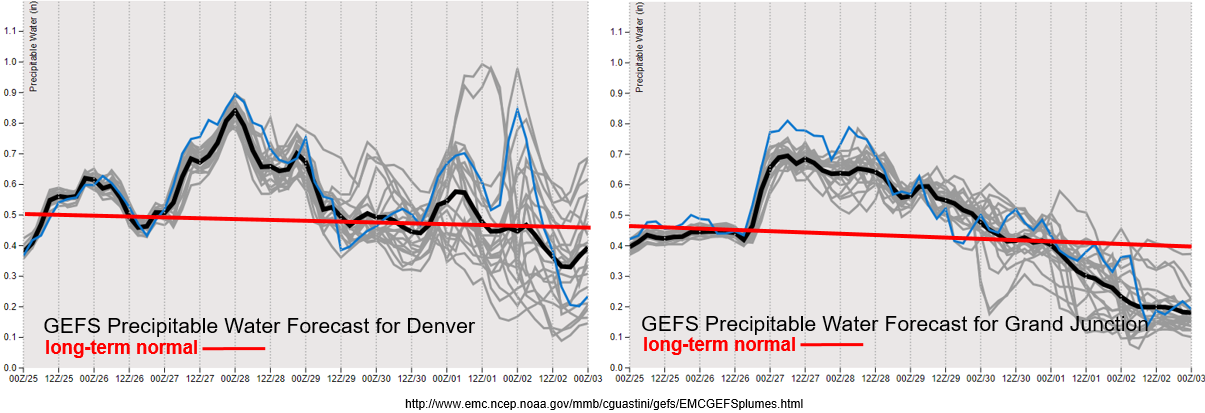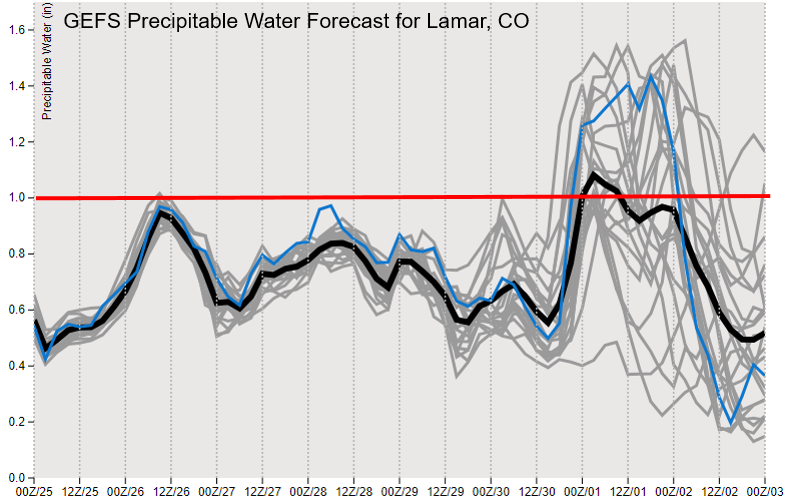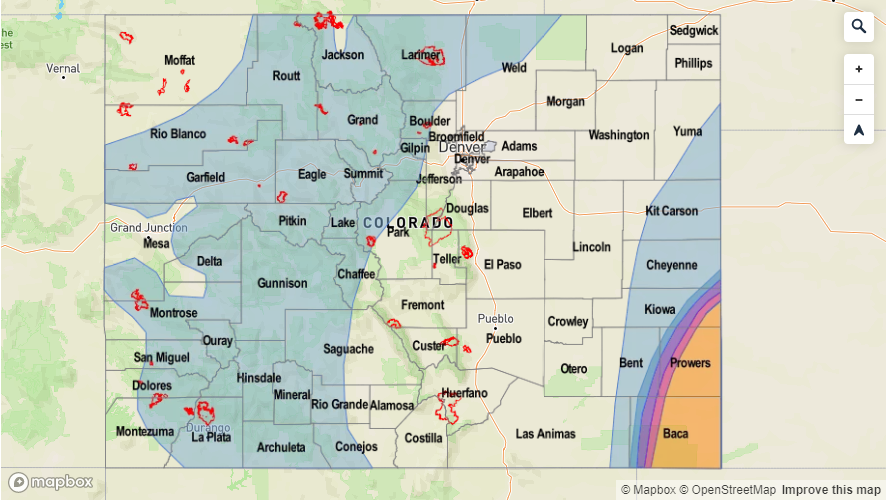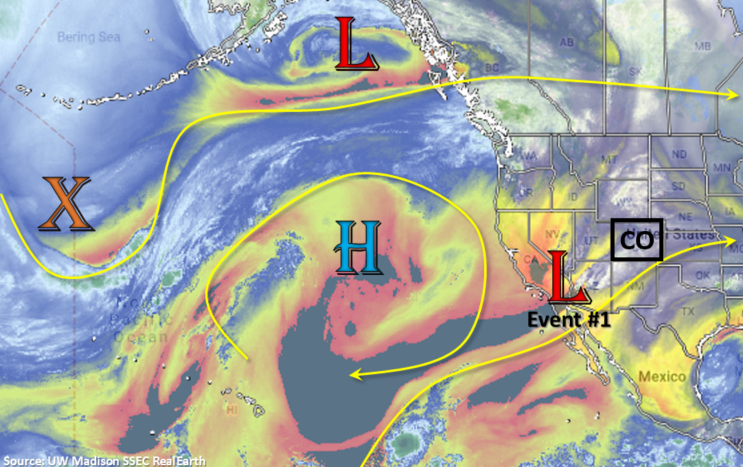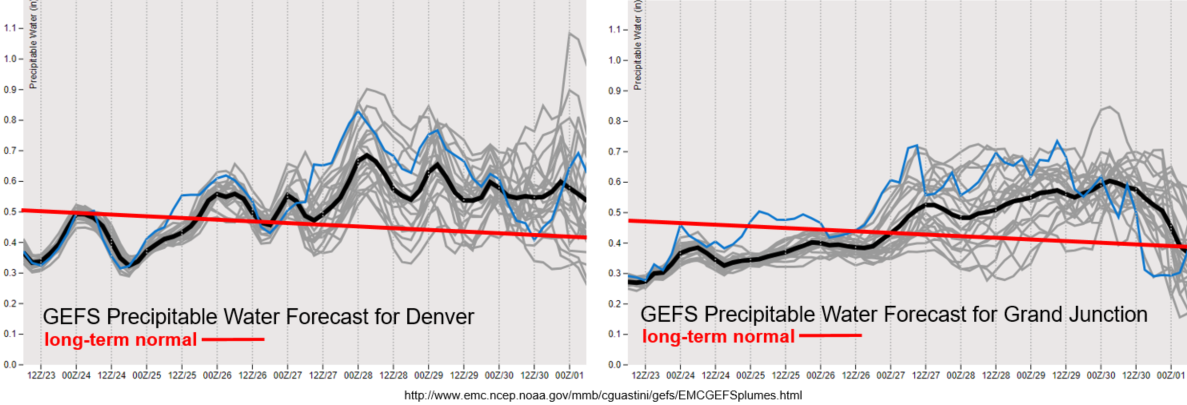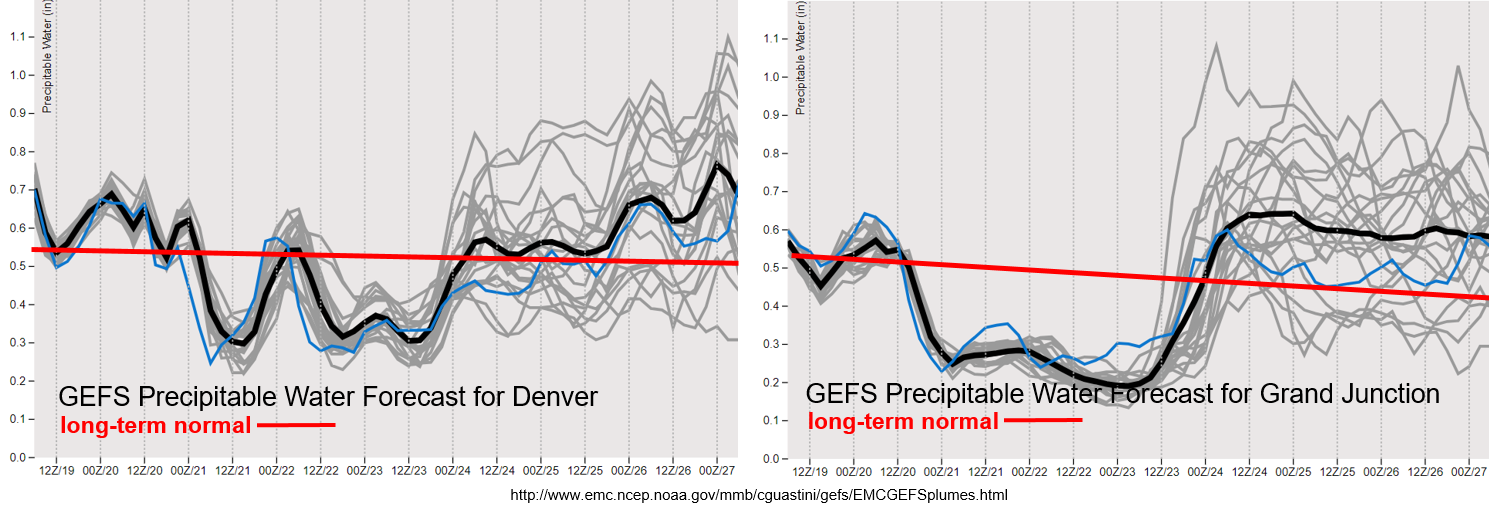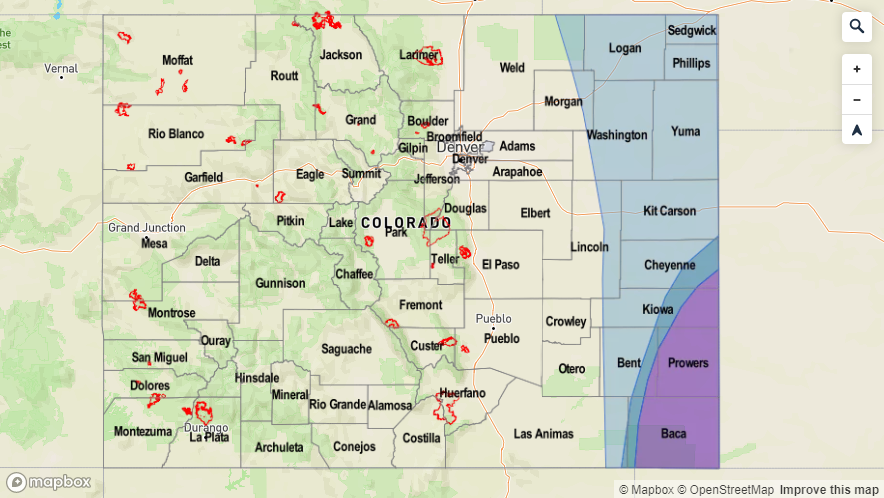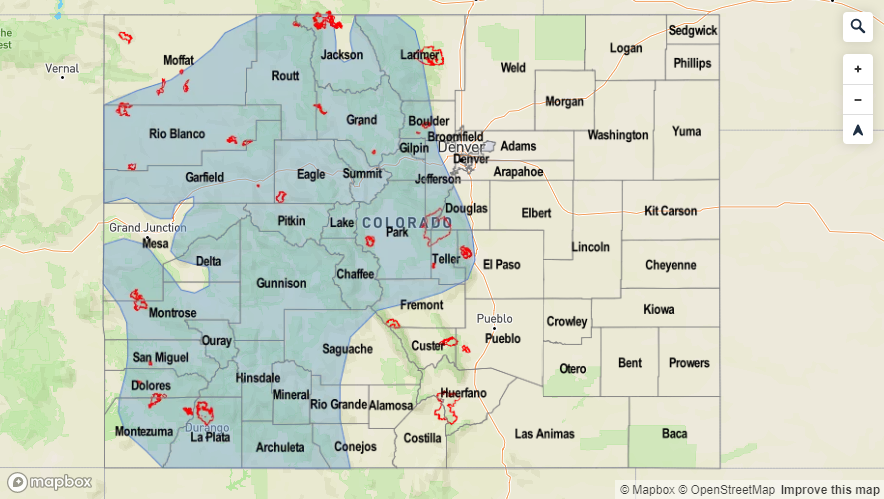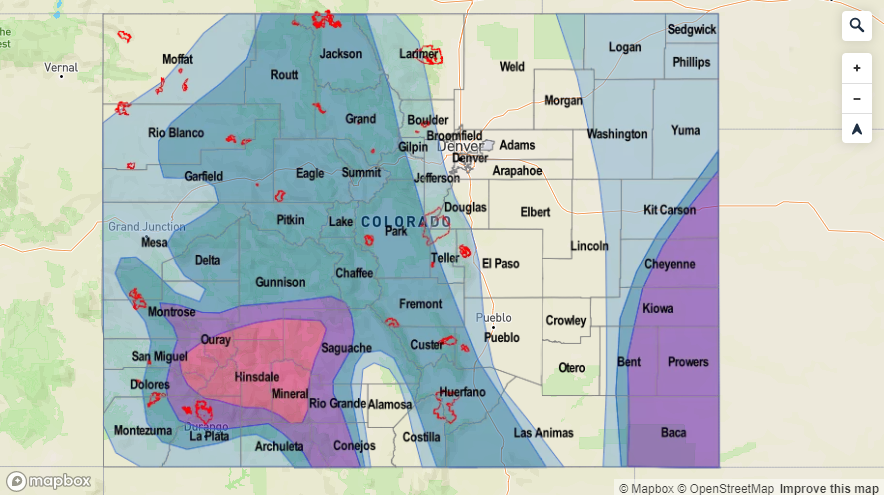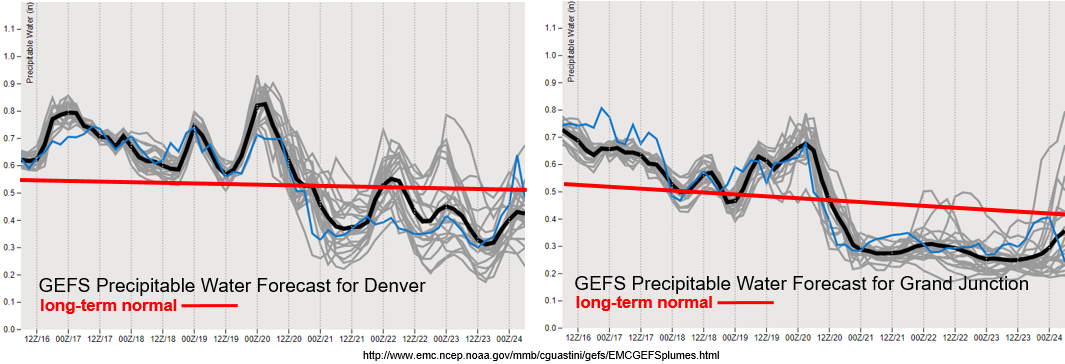Issue Date: Thursday, September 26th, 2019
Issue Time: 1:30PM MDT
Valid Dates: 9/27 – 10/11
The cut off low is currently over southern CA and has been sitting there the last couple of days, which has helped produce some severe weather over southern Arizona. This feature will lift a little north today before starting to move east across NM Thursday night into Friday. It will be responsible for the increased shower activity tomorrow afternoon and overnight for southern Colorado. On Saturday, the soon to be open wave will lift to the northeast over OK/KS as it gets absorbed into the southwest flow created by the next trough digging south over the west coast.
The new low pressure system is marked in the water vapor imagery below along the coast of British Columbia. From late this weekend into mid-next week, this low will set up a dry slot and strong southeasterly flow over the majority of the state. This is expected to return critical fire weather conditions on starting on Sunday, ramping up on Monday and possibly lasting through Wednesday. This is due to a southwest to northeast oriented jet (very tight gradient with the strong low) being present over the state from Saturday evening to Wednesday evening. Sometime on Monday night into Tuesday a surface low sets up over the eastern plains and will develop a dryline with a strengthening high pressure over the southeastern US, which will pull in a very moist air mass. Depending on the location of the surface low (and associated dryline), this feature could bring some heavy rainfall to far Southeast Plains on Monday night into Tuesday. Thus, the Elevated flood threat continues to be issued. Without much break between the two systems, I have lumped Event #1 into a two part event due to the overlapping dynamics.
Lastly over the last couple of days, the GFS runs have started to show a late season PW surge sometime during the first weekend in October. This is likely associated with an increase in tropical activity. While it is a bit too far out to determine if the surge is realistic, it is still worth mentioning since the Flood Threat Bulletin is almost over for the 2019 season. At this time there is No Apparent Threat due to the lack of details and likeliness they will change. Please tune back into the FTO on Monday as there may be some clarity for this event. Reminder the Flood Threat Bulletin ends on September 30th (Monday), but Special FTB Bulletins will be issued if a threat is needed throughout the first half of October.
Due to a scheduled supercomputer outage, the GEFS plumes webpage was not updated after the 00Z run on September 25th. The next schedule run is 12Z September 27th (Friday morning), so please note that the GEFS plumes below are not up to date. The first PW surge seen below is associated with the cut off low becoming an upper wave and a weak cold front dropping through the plains overnight tonight. As the low moves eastward tomorrow and ejects mid-level energy and moisture northward, storm chances return to mountains. Some storm activity is likely over the adjacent plains due to westerly steering flows aloft, but dry air in the low levels will likely produce more gusty winds than rainfall. Overnight rainfall over the northwest corner and northern high terrains may be possible with upper dynamics helping aid in lift as the trough digs south. With PW above 0.7 inches, a few areas may receive up to 0.25 inches by morning. After Event #1, PW starts to drop off drastically, which should limit rainfall chances from Sunday into Monday. Scattered to isolated storms will still be possible over the mountains on Sunday as there will likely be pockets of residual moisture remaining intact.
For Event #1 part 2, model runs have been very variable as to where they set up a dryline on Monday night into Tuesday over the Southeast Plains. Some runs have the moisture well to the east and south, while others place some very high values over the southeast corner of the state. Below the Denver and Grand Junction plumes is the GEFS PW plume for Lamar (bottom panel). The red line marks 1 inch, and the Event #1 Part 2 can be seen at the end of the time series. Some model members have PW as high as 1.5 inches, which would translate to very heavy rainfall for the far Southeast Plains Monday night into Tuesday. However, some models members keep PW near an inch or below. Due to the continued inconsistency between model runs, only an Elevated Flood Threat has been issued. The FTO Monday should offer some better insight to the event, so be sure to tune back in.
Event #1: Friday (9/27) – Tuesday (10/1)
No Apparent Threat/Elevated Threat as the cut off low begins to move east and the next trough digs south over the west coast.
Not too much more to mention here, since there is a lot of discussion above. Expect an increase in shower activity over the high terrains tomorrow with activity spreading into the adjacent plains (Urban Corridor, Northeast Plains and Palmer Ridge) with westerly steering flows. Storms will likely have high-bases due to lack of low level moisture, so gusty winds will be more likely than accumulating rainfall. Overnight, light rainfall may be possible for the northern mountains and Northwest Slope/Grand Valley. With colder temperatures, a light dusting of snow may be possible over the highest elevations of the northern mountains. Lack of moisture and more gradual rain rates after sundown will mean there is No Apparent Flood Threat issued. Residual moisture on Saturday and Sunday will allow for some scattered pops over the high terrains, but a drier air mass associated with the southwest flow will limit those chances on Monday. Overnight temperatures will start to get cool on Sunday and Monday night for western Colorado with overall cooler temperatures statewide forecast to start next week. Highs will really start to drop off Tuesday and Wednesday.
Fire concerns begin as early as Sunday afternoon and last as long as through Wednesday (when the trough exits the state) with the strong low pressure system creating a tight gradient. However, cooler temperatures to start next week may limit the Critical Fire conditions. Additionally over the Southeast Plains, a dryline will set up on Monday afternoon with a surface trough. This may allow some very heavy rain to fall on Monday night into Tuesday if the higher PW values make it into the area. Thus, the Elevated Threat for this portion of the event. Severe weather may also be possible with a high shear/CAPE environment over this region, but there is equal chance the dryline sets up to our east.
Event #2: Friday (10/4) – Saturday (10/5)
No Apparent Threat as a late season PW surge may occur from enhanced tropical activity.
Confidence is very low for this event, so choosing not to draw a map below. Just thought it was worth mentioning since the season is going to come to a close soon. Enhanced tropical activity may cause some high PW value to sneak in over Colorado sometime at the end of next week (1st week in October). If the PW is able to remain concentrated and arrives at peak heating, there is a chance for some heavy rainfall. Some model runs keep this moisture over the far eastern plains, while some pull it back west into the Urban Corridor. A couple runs show enough of an increase over the southwest corner that there may be burn scar flooding concerns (416/Burro). But as mentioned above, confidence is too low to draw any definite conclusions as this time. Be sure to tune back in on Monday as it is very likely there will be changes to this forecast.


